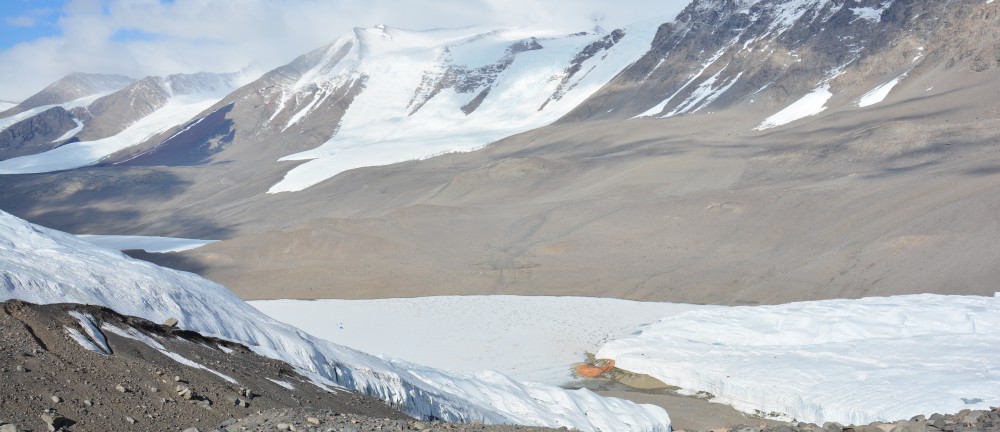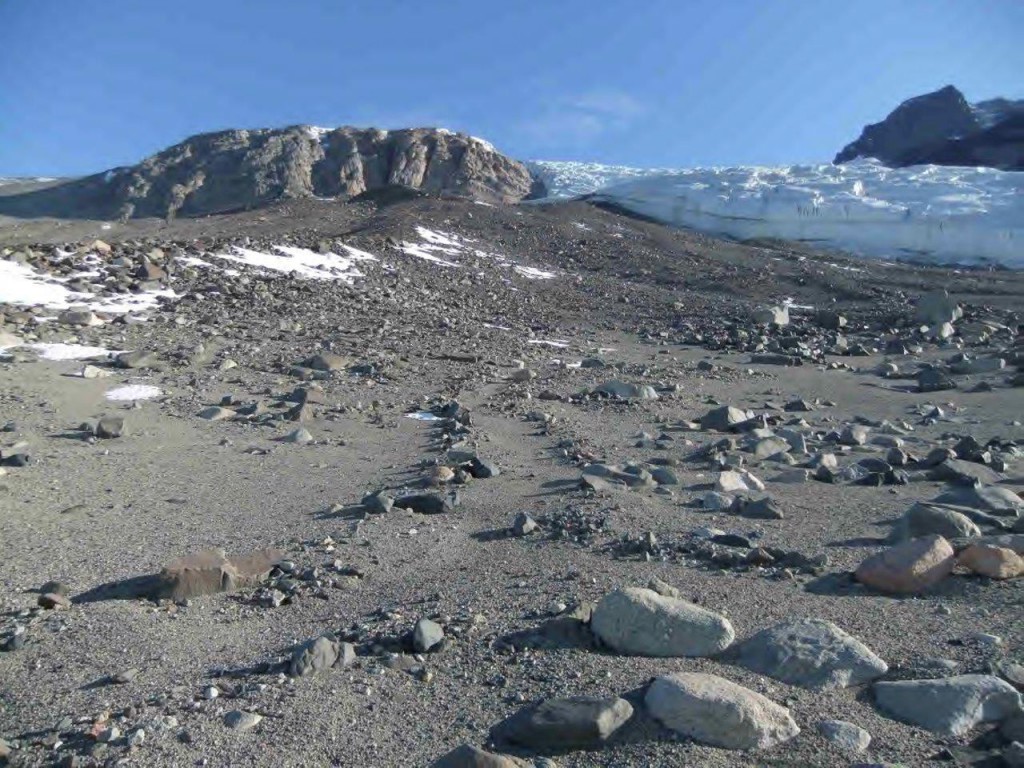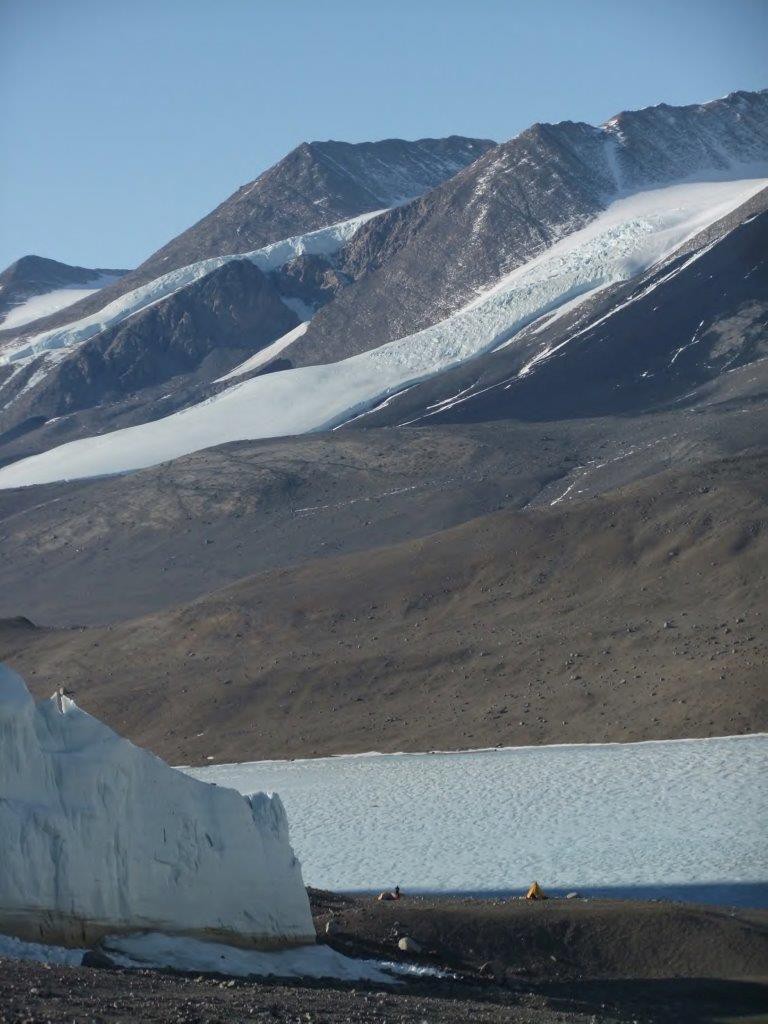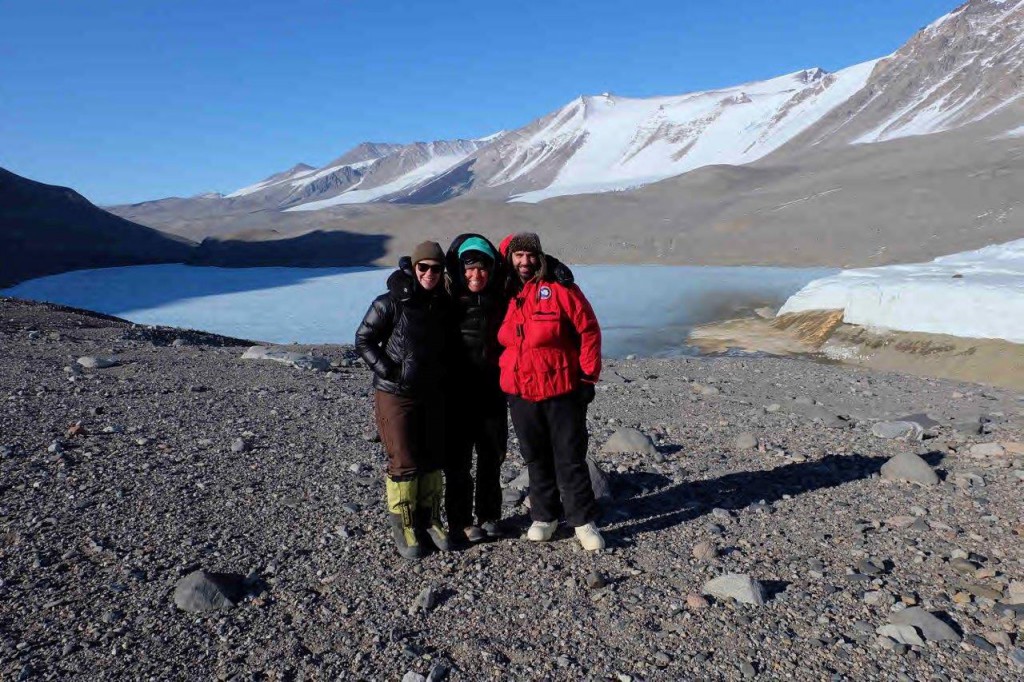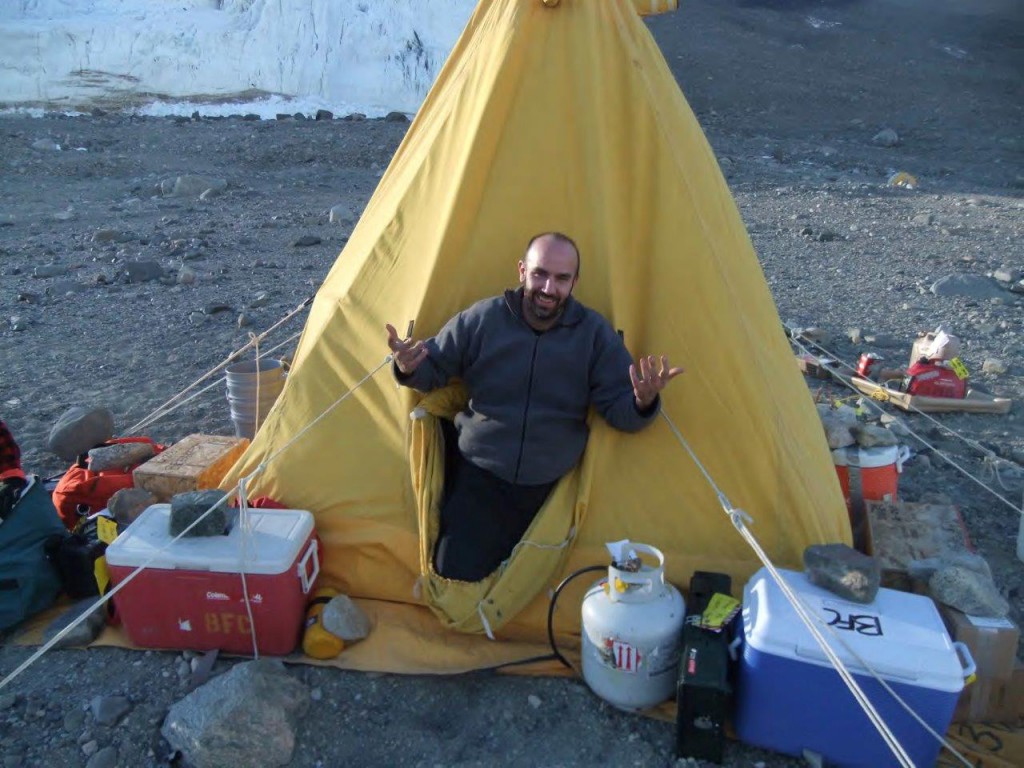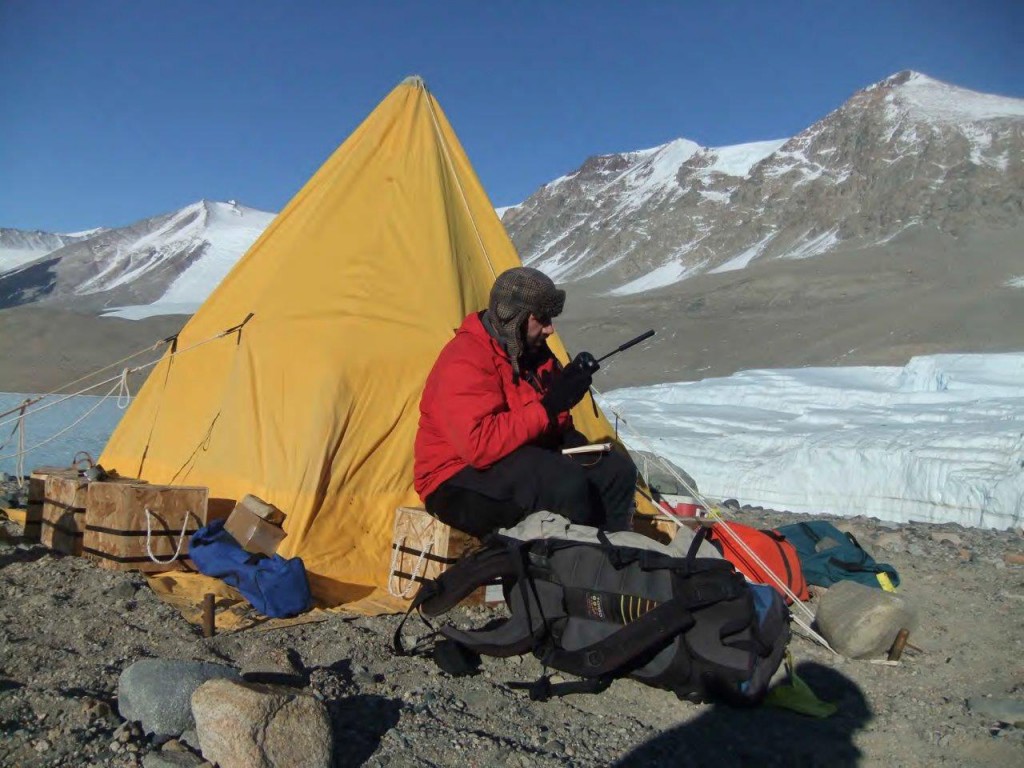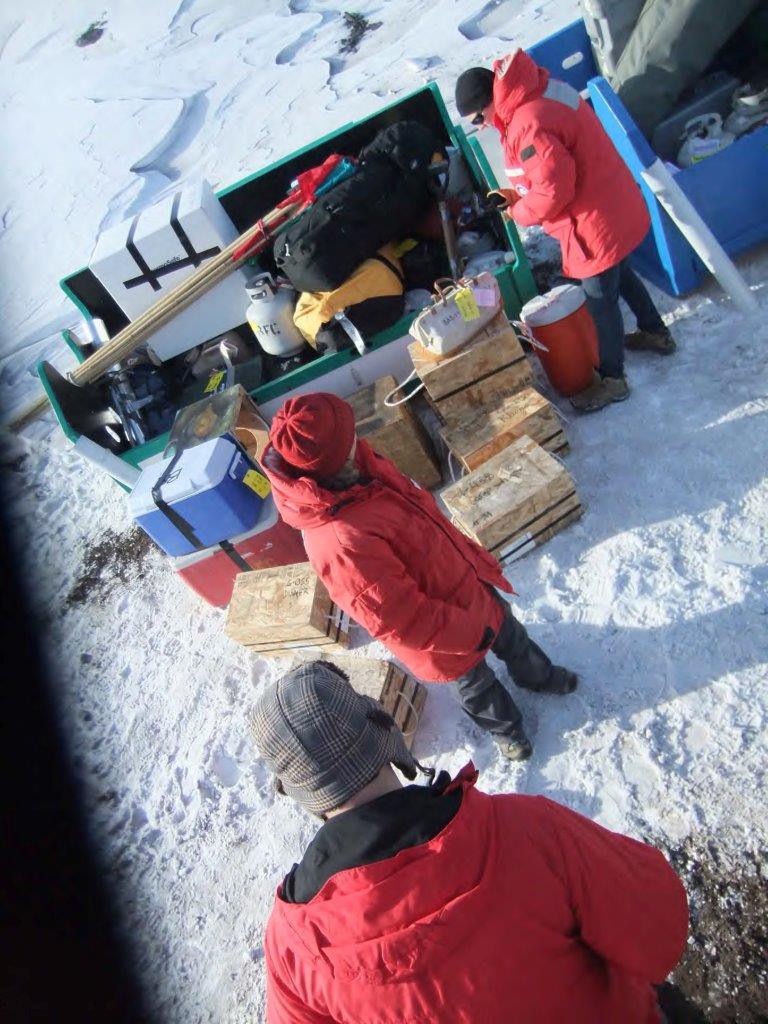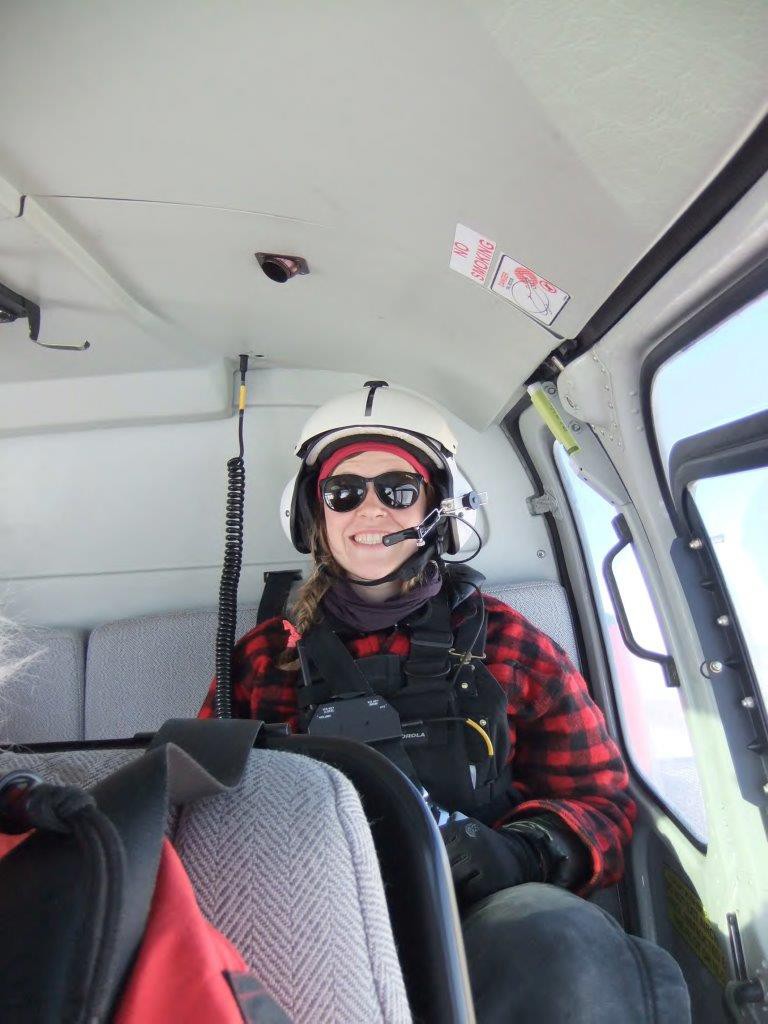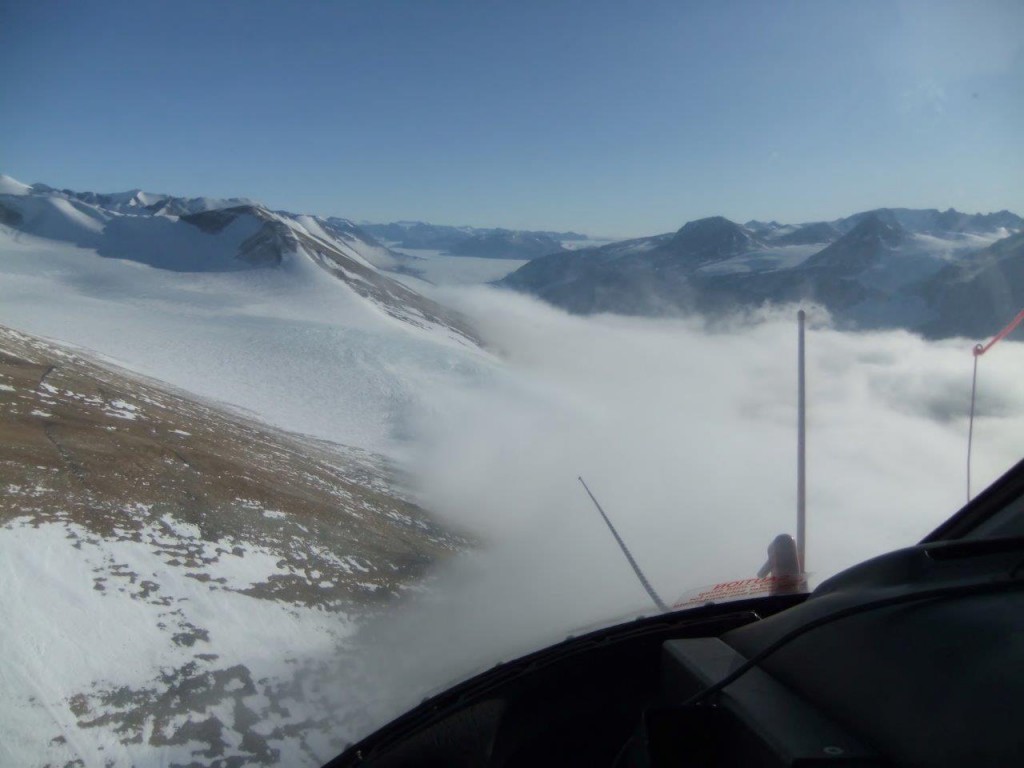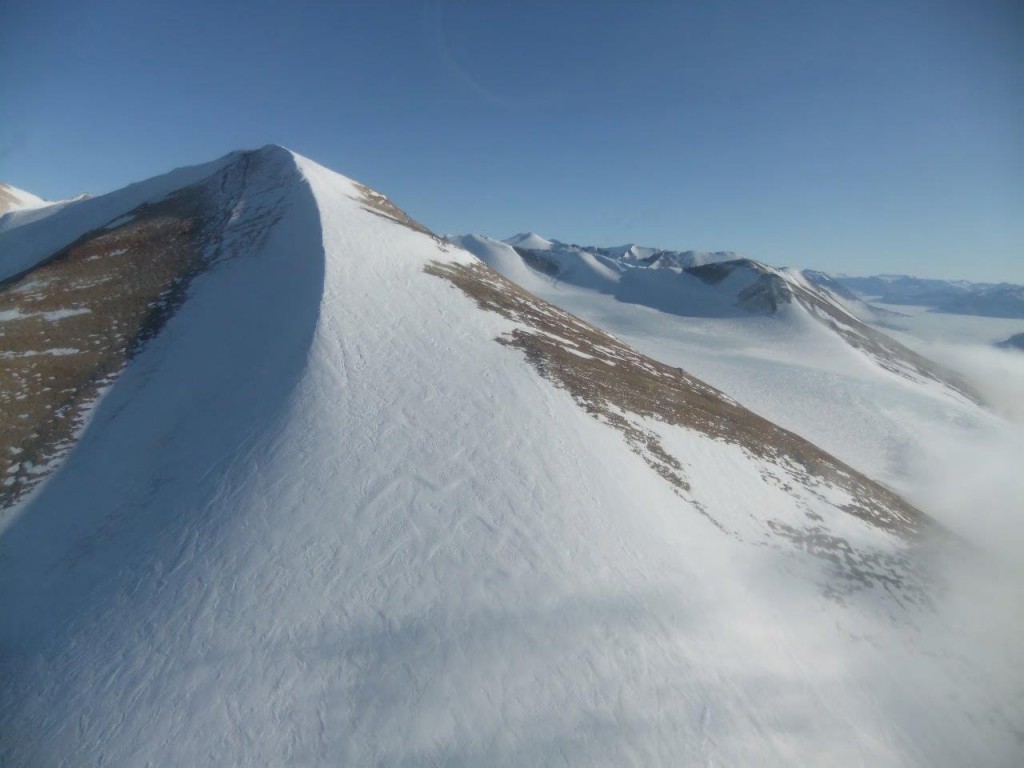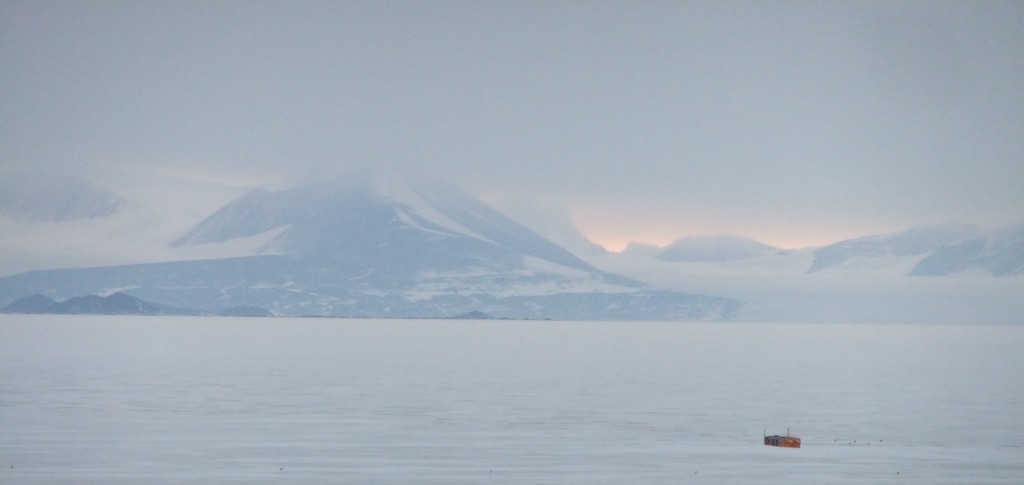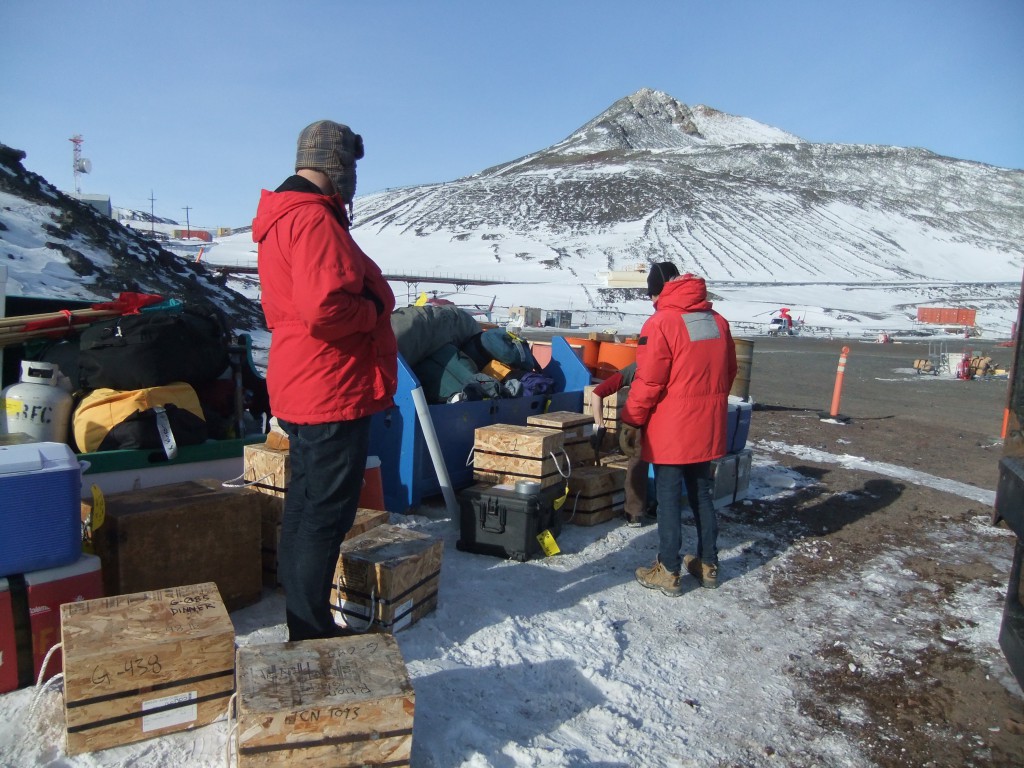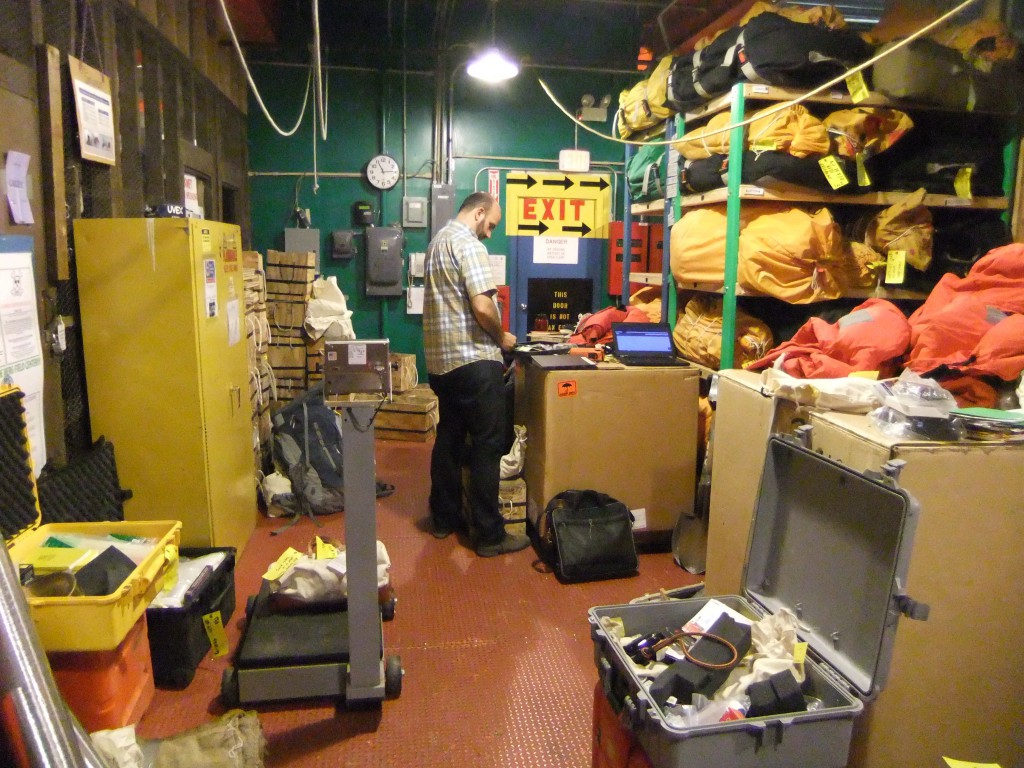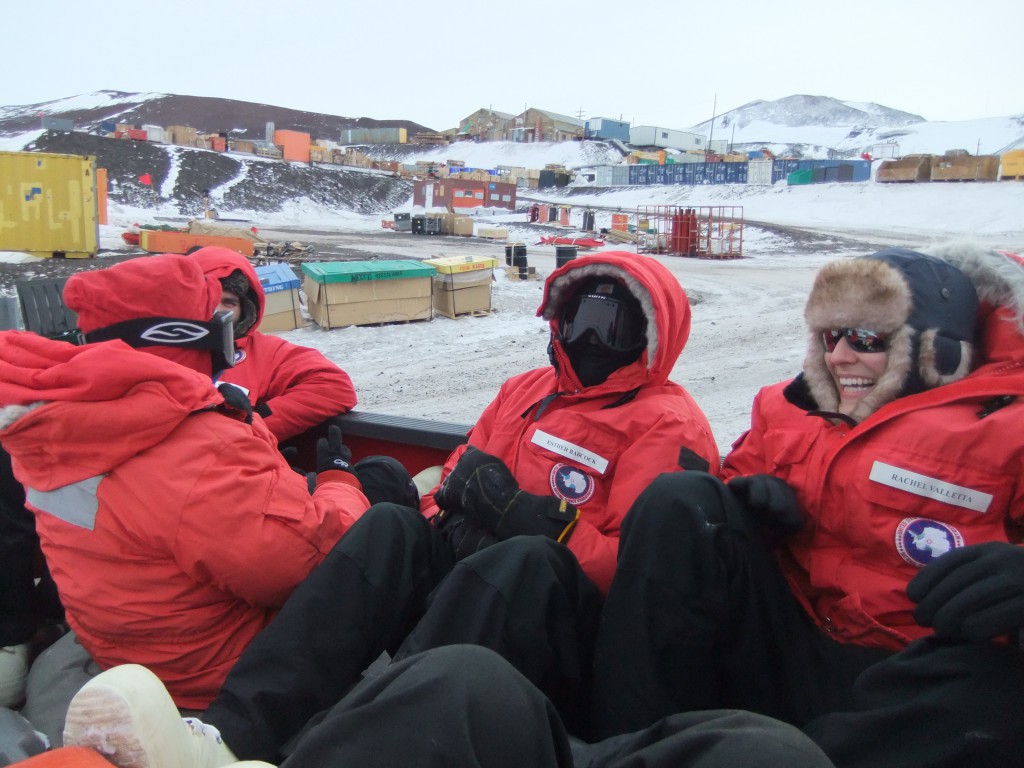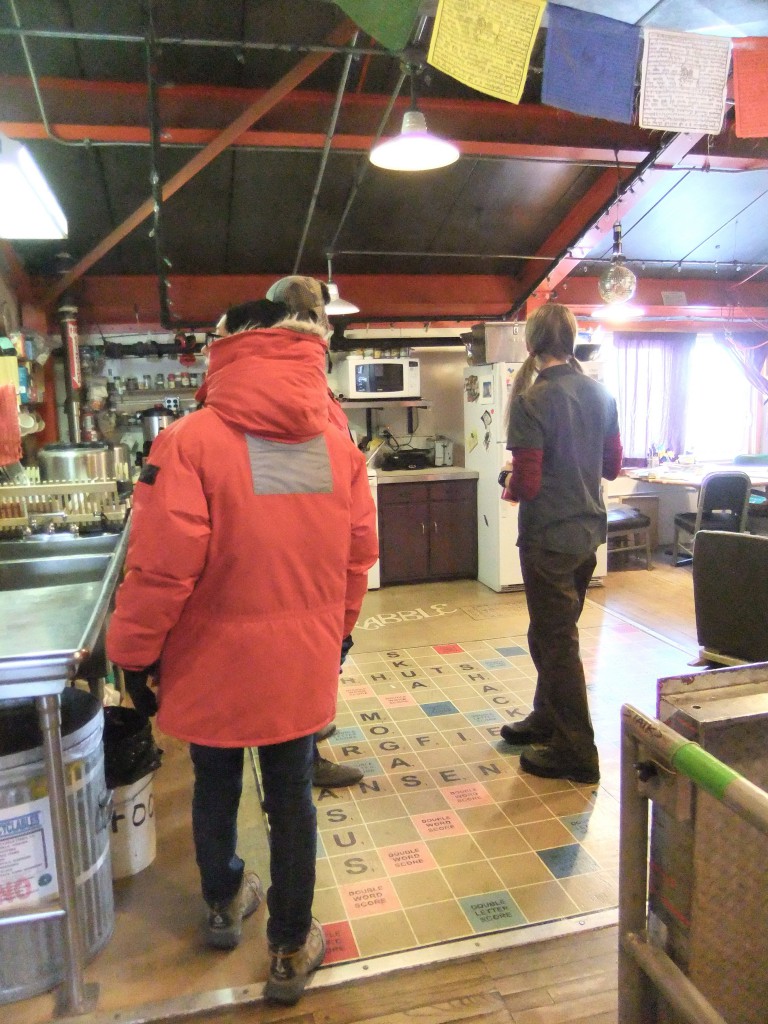We really want to get an ice core from the viscous flow lobe just west of Rhone Glacier. Saturday, we eyeballed the hill leading to the lobe, and were like, “Let’s figure out where we want to core before we haul our 80 lb drill equipment up the slope.”
So we started walking, and twenty minutes later Jay is cursing the blazes out of the hill. Distance is super deceptive here. There are no trees for scale. The air is so clear. There isn’t any haze to accumulate between your eyes and a mountain, so judging how big and far away it is is really difficult. Anyway, it was a rough hike, and we were pretty pooped (and not pleased to have to do it every day before starting to sample) by the time we got up top. It was also clear that we were most definitely not hand-carrying our drill up there.
Fast forward three days, and we’ve gotten a helo to haul the drill up the slope. We’ve also had the opportunity to hike up the thing a couple more times. We call it, with capital letters and a distinct flavor of distaste, That Hill.
Up at the top, the surface of the flow lobe is crazy jumbly, all lumps and cracks and boulders. First pit we dug, no success, not even any ice. Second pit, no success. Third pit, ice! So we set up the Sipre drill and got to augering.
Man was it slow going! We have nearly no ice coring experience between the three of us (Kate is the expert, but was over in a different valley), so we just kept plugging along. Several hours later, we’d made almost no progress. We decided to remove the Sipre from the hole, but then, alas, it was stuck! After about an hour of attempting to get it out, we just chiseled away at the ice to widen the hole. Finally, out popped the Sipre and a tiny little 8 cm long ice core chock full of sand and pebbles. Dirty! That’s why it’d been so slow, and why the drill’d gotten stuck. Ah well. Learning.
